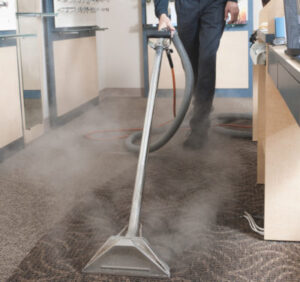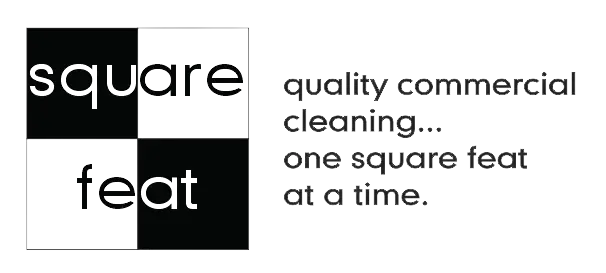Carpeting makes a comfortable and beautiful interior in a facility, residence, or commercial property. The fact that 70% of homeowners in the US prefer carpet flooring and office buildings throughout the country commonly install it confirms this. But this popular choice of floor coverings can have a downside if proper carpet maintenance is not done including carpet cleaning.
Carpeting can pose serious health risks to the occupants of a facility when not properly maintained. Unfortunately, most people don’t know many of these health risks and their causes.
This blog post will discuss some of the health risks posed by carpets and how to mitigate those risks for building occupants. The article will also discuss how to achieve the maximum life from your carpets with some simple preventative measures.
Germs & Bacteria in Carpets
Studies confirm that on average, people spend 90% of their time indoors. Carpets can be deceptively unclean if not properly maintained. Any contaminants present in carpets can transfer on the soles of shoes from one area to another.
The perilous germs, bacteria and contaminates in carpets can include:
- Campylobacter: Favored by moisture, it causes diarrhea, fevers, and cramps in stomach.
- Norovirus: It can cause stomach flu.
- MRSA: Generally, they come from gyms and related accessories. It can cause aching red bumps, rashes and fever.
- Fungi and Mold: Favored by moisture like Campylobacter, they cause allergy and in rare cases can lead to
- death of the affected person.
- Micrococcus: It causes skin infections and meningitis. It is particularly risky for those with weak immune systems.
- Enterococci: It causes severe infections such as UTI, bacteremia, diverticulitis, and meningitis.
- Mycotoxins: Various kinds of molds produce these, and they are a serious threat to the immune system. Thus, they can cause a myriad of health issues.
Sick Building Syndrome (SBS)
In 1980, WHO coined this term to describe harmful elements in an indoor environment. In this condition, the occupants fall victim to cough, chills, rashes, headache, pain in chest and muscles, fatigue, and fever. SBS is caused by inadequate building ventilation as well as specific biological and chemical contaminants. The symptoms can often go away if the carpets are removed, indoor air quality is improved, or the occupants discontinue to live or visit the facility.
Polluted Indoor Air
Carpets are produced of synthetic materials, i.e., nylon, acrylic, and PVC, which outgases toxic chemicals, commonly known as volatile organic compounds (VOC) into indoor air. In addition, carpet traps chemicals such as cleaning agents, smoke, fumes, deodorizers, among others. Once these chemicals encounter carpet, they linger in it, and slowly release from the carpet fibers into the air for a sustained period, polluting the indoor air.
- The contaminated indoor air can aggravate the symptoms for asthma and allergy sufferers and can cause sudden and severe asthmatic and allergy attacks.
- Indoor air pollutants cause headaches, lethargy, and irritation in the eyes and nose.
- Long-term exposure can cause respiratory and heart diseases.
- In worst cases, the chemically contaminated air can lead to the onset of certain types of cancer.
Weak Immune System
Our immune system constantly protects us from harmful toxins, viruses, germs, and bacteria every day to keep us in great health. However, a sustained unhygienic atmosphere can compromise our immune system and risk our health. Bottom line: staying in a facility with contaminated carpets can compromise our immune system and make us more susceptible to illness.
Respiratory Issues
Mold grows in moist carpets and can attract different sorts of bacteria and allergens. When the occupants inhale indoor air contaminated with mold, it can cause flu-like symptoms and respiratory issues. This condition is even more of an issue for asthma patients. Removing these contaminants requires proper carpet cleaning so occupants can continue to work without negative effects.
Skin Issues
Walking barefoot on carpets does feel so nice, but it can invite serious skin issues too. When we are on carpets barefoot, the germs and bacteria can find a way to penetrate our skin through cuts, wounds, and pores. They cause athletes’ foot and skin asthma. For skin asthma patients, these germs and bacteria can cause skin asthma attacks.

Solutions
We have briefly described the health risks that carpets can cause to you, your employees, and other building occupants. It is time to present the solutions to prevent every risk to your health.
- Consider purchasing carpets that are aired out or emit low levels of VOCs. Sensing the serious hazards of VOCs, companies now manufacture carpets that emit a low quantity of VOCs. Some manufacturers air out carpets before selling them.
- Purchase untreated carpet made of natural fiber products such as wool or hemp.
- Consider low pile carpeting with less carpet fiber mass.
- Purchase walk off mats for all entry ways to trap dirt before it enters further into the facility.
- Utilize chair mats at workstation areas to avoid excessive wear and tear of carpet under chairs.
Chair mats also help prevent food and drink spills at workstation areas from encroaching into carpet fibers.
- Use carpets with Green Label Plus Certification by the Carpet and Rug Institute.
- For proper carpet maintenance, seek professionals to do carpet cleaning and regular maintenance. If you are a facility manager, professional carpet cleaning should be of great interest to you.
Vacuuming and extraction cleaning of carpets without the proper equipment and procedures can leave pollutants trapped in the carpet fibers. It is advisable that you hire a professional company that uses High Efficiency Particulate Air (HEPA) filter vacuums and proper procedures to extract carpet to help ensure particulates and other contaminants are not left behind.
Conclusion
Carpeting in commercial facilities can look appealing, help prevent the chances of slips and falls, and can help absorb noise. On the downside, carpets can provide a trap for microscopic dust particles, dander, pollen, fumes, food, and germs. When not properly maintained, they can lead to bacteria growth that can cause and aggravate asthma and allergies. Once embedded, the contaminants can be re-released with high activity levels, during vacuuming (if vacuums are not equipped with HEPA filters), and when removing carpets from floors.
Regular vacuuming with a HEPA filter vacuum is critical, but it cannot thoroughly remove foreign substances stuck to carpet fibers. To ensure optimal health of the occupants of a facility and longevity of carpets, periodic carpet cleaning by professionals is also recommended at least every 6 to 12 months.
Square Feat has been serving commercial clients with carpet maintenance in the Phoenix metropolitan area for more than two decades. We are recognized as a full-service janitorial provider by the Business Journal and Arizona Business Magazine.
We are bonded and insured, and we don’t require long-term contracts.
Please, visit this page to learn more details about our carpet maintenance services. Click here to obtain a quote or call us at 480-777-0605 to schedule an appointment.



